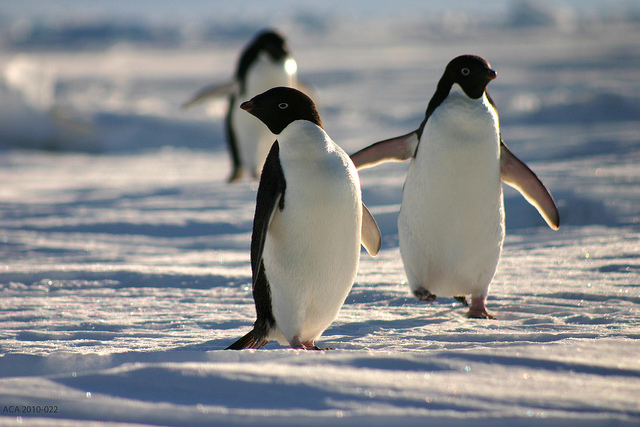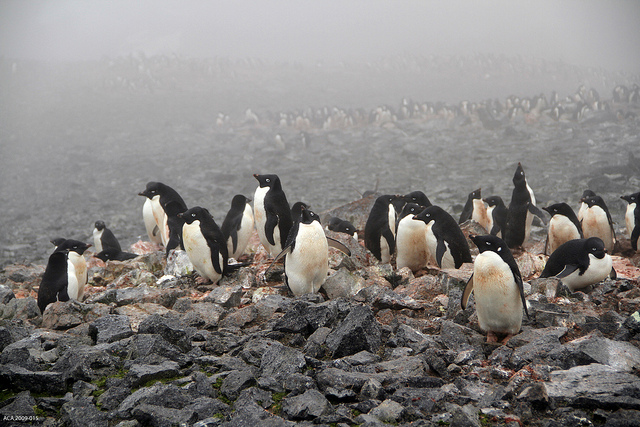Adélie penguins may actually benefit from warming global temperatures, unlike other polar species. That’s according to a study published in the journal PLOS ONE on April 4, 2013.
Adélie penguins – smaller than their Emperor penguins counterparts – are common along the southern Antarctic coast. The Adélie penguin lives only where there is sea ice but needs the ice-free land to breed.

Researchers from the United States and New Zealand studied a combination of aerial photography beginning in 1958 and modern satellite imagery from the 2000s. They found that the population size of an Adélie penguin colony on Antarctica’s Beaufort Island near the southern Ross Sea increased 84 percent (from 35,000 breeding pairs to 64,000 breeding pairs) as the ice fields retreated between 1958-2010, with the biggest change in the last three decades. The average summer temperature in that area increased about a half a degree Celsius per decade since the mid-1980s.
The research affirms models published in 2010 projecting how south polar penguins might respond to changed habitat as Earth’s atmosphere reaches 2 degrees Celsius above pre-industrial levels, a point that is rapidly approaching.

The study showed that available habitat for Adélie penguins on the main portion of the Beaufort colony, on the south coast, increased 71 percent since 1958, with a 20 percent increase from 1983-2010. The extent of the snow and ice field to the north of the main colony did not change from 1958-1983, but then retreated 543 meters from 1983-2010.
In addition to the overall population growth, researchers saw an increase in population density within the colony as it filled in what used to be unsuitable habitat covered in snow and ice. They also found that the emigration rates of birds banded as chicks on Beaufort Island to colonies on nearby Ross Island decreased after 2005 as available habitat on Beaufort increased, leading to altered dynamics of the population studied.

Bottom line: Researchers found that the population size of an Adélie penguin colony on Antarctica’s Beaufort Island near the southern Ross Sea increased 84 percent as the ice fields retreated between 1958-2010.











